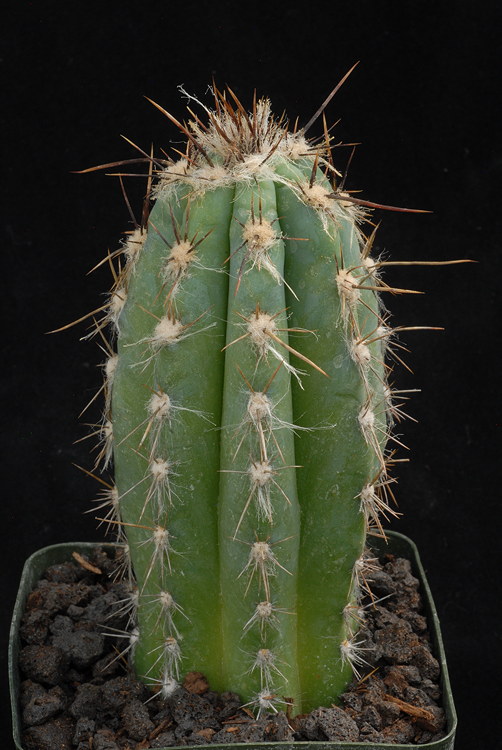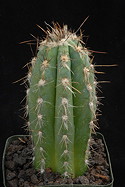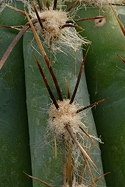This columnar cactus is often confused with P. leucocephalus by virtue of morphology and alliterative similarity of the names. P. lanuginosus is native to Curaçao and northern South America while P. leucocephalus ranges from Tamaulipas in northeastern Mexico south to Guatemala and Honduras. Both become tree-like and have columnar stems of similar diameter and rib-count that are glaucous when young. Flowering stem tips become conspicuously white-wooly as the name P. leucocephalus suggests (Greek leuco — white, cephalus — head), while the epithet lanuginosus (Latin lanug — wool) also refers to wooliness of the areoles though this is not quite as extravagantly developed in this more southerly species. Perhaps the easiest way to distinguish the two species at a glance is by the spination, which is similar, with both aging gray, but that of P. lanuginosus tends to be darker, dark brown to black when young, while that of P. leucocephalus is paler yellow to brown. Given the extensive ranges of both species, a number of synonyms have been published for local variants. The one offered here, for example, came to us as P. colombianus (some authors recognize it at the subspecific level) as it was collected by Conrad Fleming in Colombia. The type locality for P. colombianus is reported as Dept. Cauca, near Venticas del Dagua and it is said to occur throughout northern Colombia. Rooted cuts of HBG 66844, $10.

Published in the Cactus and Succulent Journal, Vol. 89 (3), May-June, 2017

